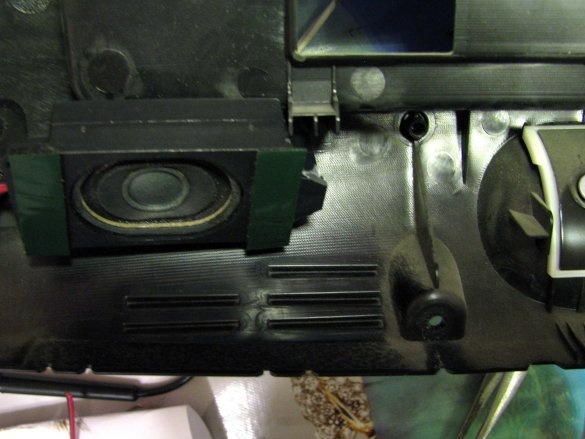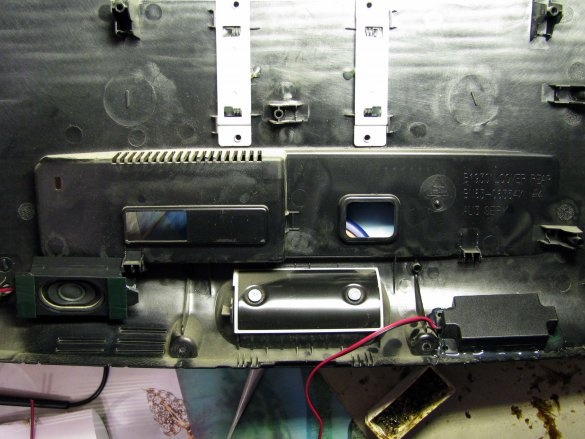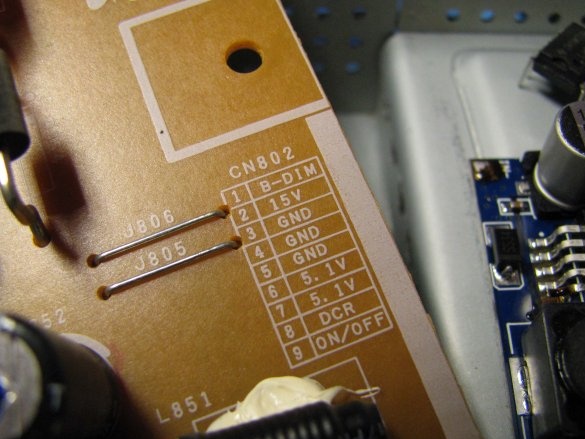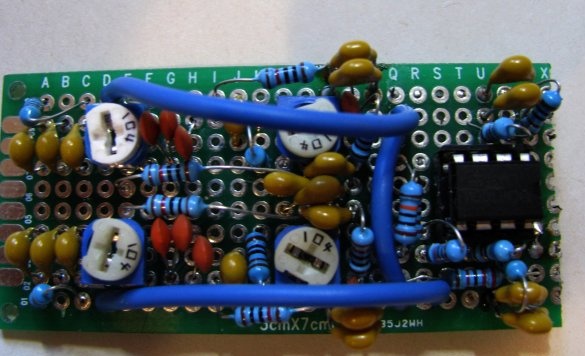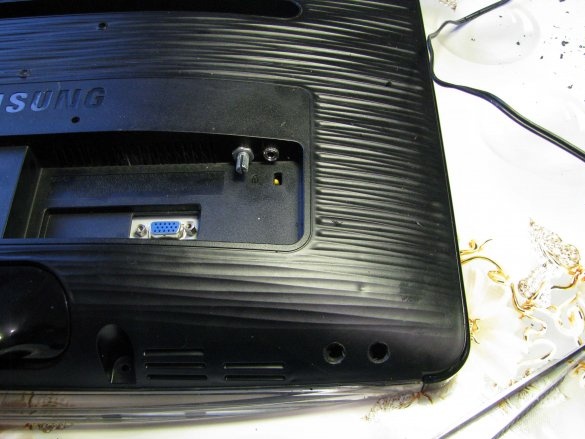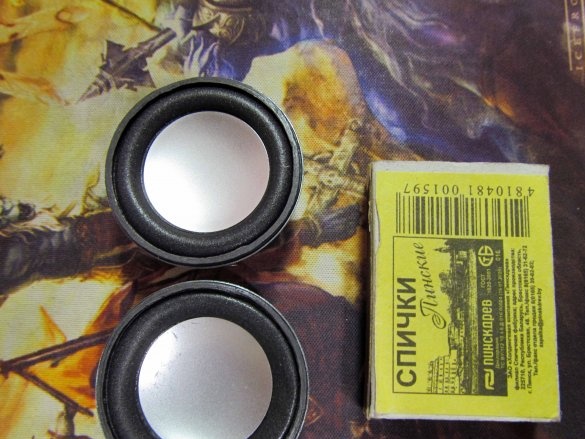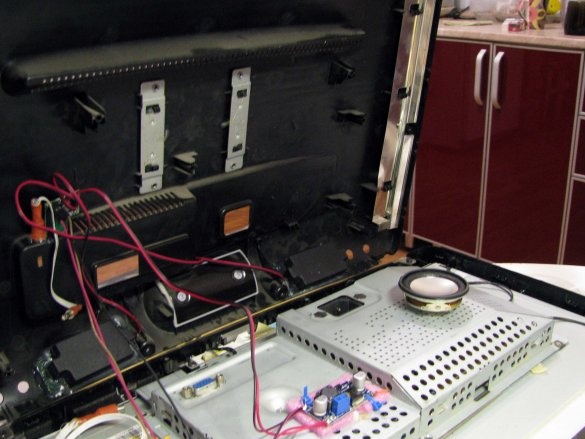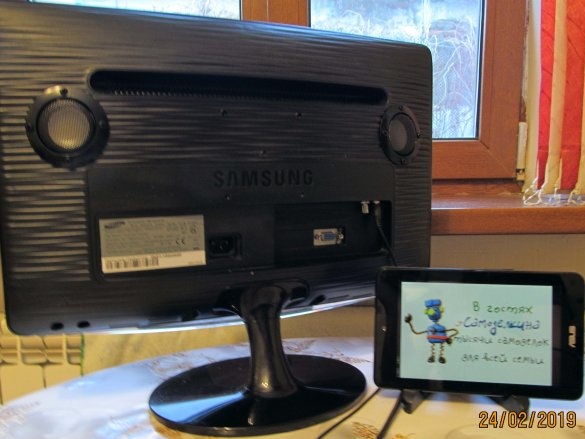New article =)
In the end this articles, I, (possibly myself) advised me to try a bunch of Miracast Dongle + HDMI to VGA converter. I will say right away that the idea was a success, and it is she who will go to the next article. But today, about computer, portable sound.
In principle, I am quite happy with the sound my ASUS makes and as time shows, 99.9% I use it. I have a couple of HP micro speakers by the way, quite bass, but, recently, extra wires, they began to strain me quite a bit.
I suggest that you, along with me, try to embed the sound in the monitor, start this bagpipe, quarrel in some places, and draw conclusions about what and how could be done differently.
About two years ago, out of a whim, I acquired two pairs of these four-ohm speakers.
In the escort to the lot, it was written that it is these speakers that are used for installation in televisions. The speakers, as you can see, are already in the acoustic design, I thought that I was observing the resonator body, and most likely, even some bass should be expected. Then about the same, I got a remodeled monitor today.
At the end of October, opening the monitor, I found ventilation slots, and adjusting the speaker, I realized that it was possible to use just them.
As you can see from the photo, on each speaker case, I pasted a double-sided tape on a foam basis, in order to eliminate the inevitable rattle, and only then, brushing off the dust around the seat with a brush, filled every speaker around the perimeter with hot glue.
Having quickly brought together the two halves of the monitor case, I was convinced that these foreign elements do not prevent the two halves from snapping into a single whole.
To get to the monitor's power connectors, you should remove the metal protective cover in which both the VGA processing board and the matrix and the power supply with a backlight dimmer are located.The only cable going from the power supply board to the VGA processing board has labels for each pin.
I decided to connect to the + 15v bus for reasons not to load 5V sources with inrush currents (which will be in the amplifier circuits) using the LM2596S step-down module is exactly the same, I used earlier.
In October, remodeling one of stereo pair Microlab, I used one of my two stereo tone controls.
As a basis, I took the circuit from the brochure "Amateur Radio Schemes", and redid it under the LM358 op-amp taking into account its unipolar power supply.
In the upper positions of the engines (according to the scheme) of the tuning resistors, the maximum (+ 15db) rise of the lower (R2) and higher (R7) frequencies is achieved by blocking the middle frequencies. In this case, of course, there is a general attenuation of the input signal which compensates for the opamp with a gain of 10 = R11 / R6.
Also, I had a stereo expander assembled last summer, which I repeatedly repeated many years earlier. The scheme is taken from the magazine "Radio". It seemed to me that emphasizing the depth of the stereo base with such an arrangement of speakers would not be superfluous, and besides, it cost me nothing in terms of picking with a soldering iron - the expansion unit has been idle for quite a long time.
The only thing is that I replaced the input (C1 and C2) capacitors according to the scheme with large values, I replaced the dual variable resistor R1 with two constants of the same value. In addition, the same op amp LM358 was used.
Taking into account the fact that this circuit with unipolar power supply, through dividers R4 and R5, half of the power supply is supplied to non-inverting input 2. For the lower channel according to the scheme, these are pairs R6 and R7 and non-inverting input 5.
So, at the entrance there is a terablock, after it a stereo base control, behind this, a PAM8406 folk amplifier.
I chose it precisely because the dual volume control is mounted on the amplifier board, which, as I thought, will give me the opportunity to quickly adjust the gain without endlessly opening and closing the monitor.
A preliminary view turned out like this.
On the reverse side, in my opinion, the mounted audio jack and the UM resistor shaft are located successfully. Pay attention to the two proven through holes, I made them to at least somehow compensate for the ventilation slots now occupied by the speakers.
It is time, not finally collecting the monitor case, to listen to what exactly happened to me. Listen and swear.
I will not say that I had doubts about the frequency range of the speakers, which I have already pasted. The suspension of the diffusers is rather stiff, but, I honestly hoped, to compensate for the low-frequency response with the tone control, but it was not enough. These speakers sang beautifully at higher frequencies, somehow capturing the middle ones (I listened to the speaking VestiFM), and the control in the bass, only slightly extended down the middle frequencies of the speakers. No basque with excellent stereo panorama. I laughed, behaving on the nonsense that the seller wrote in the title of those speakers, hehe.
IN previous project, I used two speakers with a diameter of 5cm. The suspension of the diffusers is very flexible, and in addition, well-heard bass was perfectly squeezed out of them. True, in that homemade, these speakers were given the role of midrange-tweeter, but, I listened to them earlier, and was satisfied.
It was in early November, and I already used the last pair of 5cm speakers, I had to order new ones, this time, I ordered two pairs at once, for the future. The monitor, meanwhile, was assembled and used for its intended purpose.
A month passed, and what was my joy when the speakers came, and after cutting the mail package I found four, 4cm tweeters ..
This time, I was seduced by the appearance and reduced (allegedly) price.
In general, I ordered again, and they arrived already in January. About three weeks ago, having finally found time, I dismantled the monitor again, and began to think where to fix another pair.
The place was found on both sides of the ventilation chute, in fact, it was the only place, so I didn’t really worry about choosing it.
The speakers were glued, pre-phased and connected in parallel. 5cm, 8th and 4th in the cases - the amplifier began to wheeze, it came, observing the phasing, to connect them in series.At the same time, the level of pumped total volume, I was quite satisfied.
With the tone control, I raised the bass and slightly reduced the already cutting pitch of the treble, once again turned on the entire barrel organ and, pay attention to the metal, vertical bar on the left. Besides the fact that she began to rattle, she obviously did not carry more functions on herself. She didn’t cover anything, she didn’t serve as a screen, and after looking at the case in that place, I concluded that the bracket most likely remained from that modification of this display case, in which there was also a TV - there obviously should have been additional connectors.
In general, around the perimeter I missed the speakers with liquid automotive silicone gasket. And on the reverse side, having also greased the edges of the protective nets, I put the linings on the screws.
Conclusions and how everything could be simplified.
In all respects, I turned out to be unfinished - this is, first of all, the rest.
During the assembly of this whole thing, I contacted one master who risked completing a similar monitor in the same way, but he, unlike me, at already average volume, had interference with the display matrix. As a result, he built into the monitor an additional, miniature and single-amp power supply, the original Samsung charge. This may well be the solution.
In addition, the VGA cable is shielded and has its own GND ground.
And when the sound cable was connected, the sound amplifier was already emitting interference, since an “earth loop” had formed, in general, he wrote to me, the installation of an independent power supply had solved both of his problems. In my case, the earth was taken from the same board of the monitor’s power supply and I didn’t hear any interference that should be mentioned.
I already had a timbre block, but you could completely do without it, as well, you could do without a stereo expander, since this monitor is planned to be used with a Miracast set-top box, and what's the point in the stereo panorama if you perceive it with one ear while lying on the couch?
In my version, the sound amplifier never mutes, but when it is idle, there are absolutely no clicks or buzzing. Although the MUTE function is easy to organize, taking the signal from the damping line of the backlight, but, this is another extension of the final result.
The very first photo I decided to take a week ago, but I burned my camera down, the publication of this article was postponed for another week, and now, on Sunday (Feb 24), I got lucky and I got a replacement for it.
Before the extreme closure, I vacuumed the inside of the display, I did not do this earlier because I did not want to admit to myself the ultimate sucker. Ho ho =)
And yes, the display and the hated blue SMD LED, which blinks, illuminates the room and interferes with sleep, I plugged a piece of foam polystyrene.
References
-, rumble filter (K544UD1A);
- on the chip K548UN1;
- lowering;
- speakers in the resonator;
- speakers;
- five centimeter;
- microcircuit;
- for five-centimeter speakers
- digital amplifier module.





